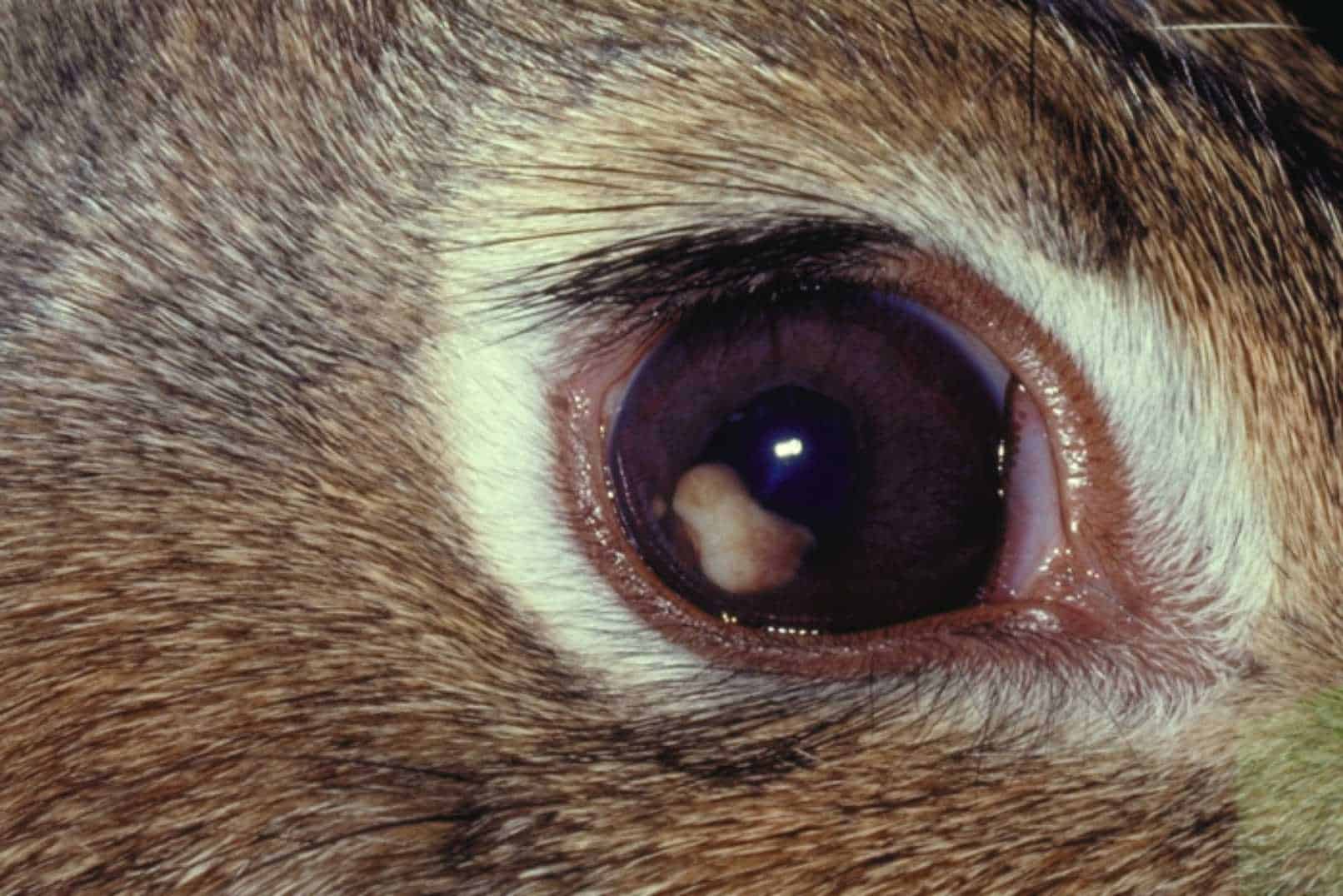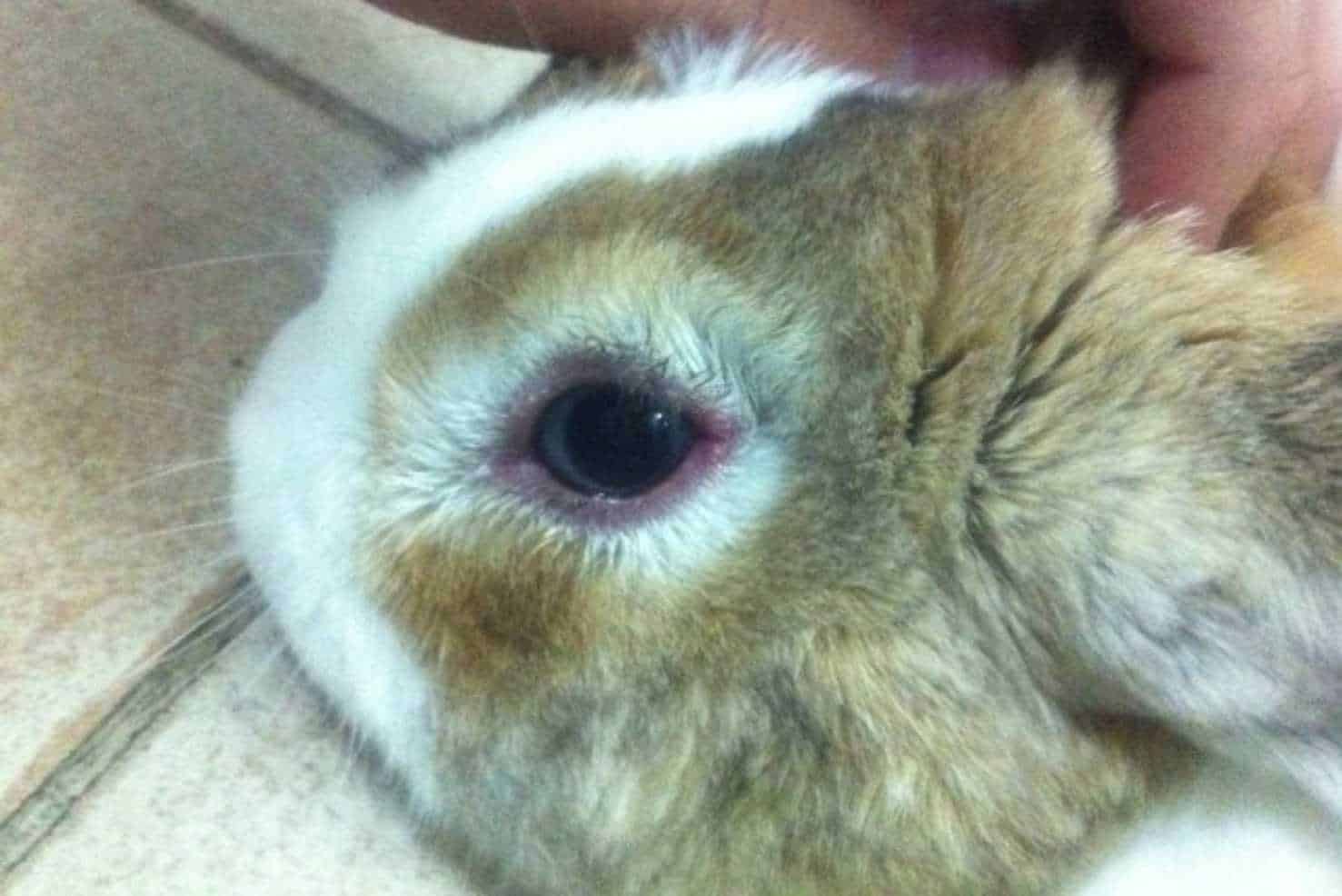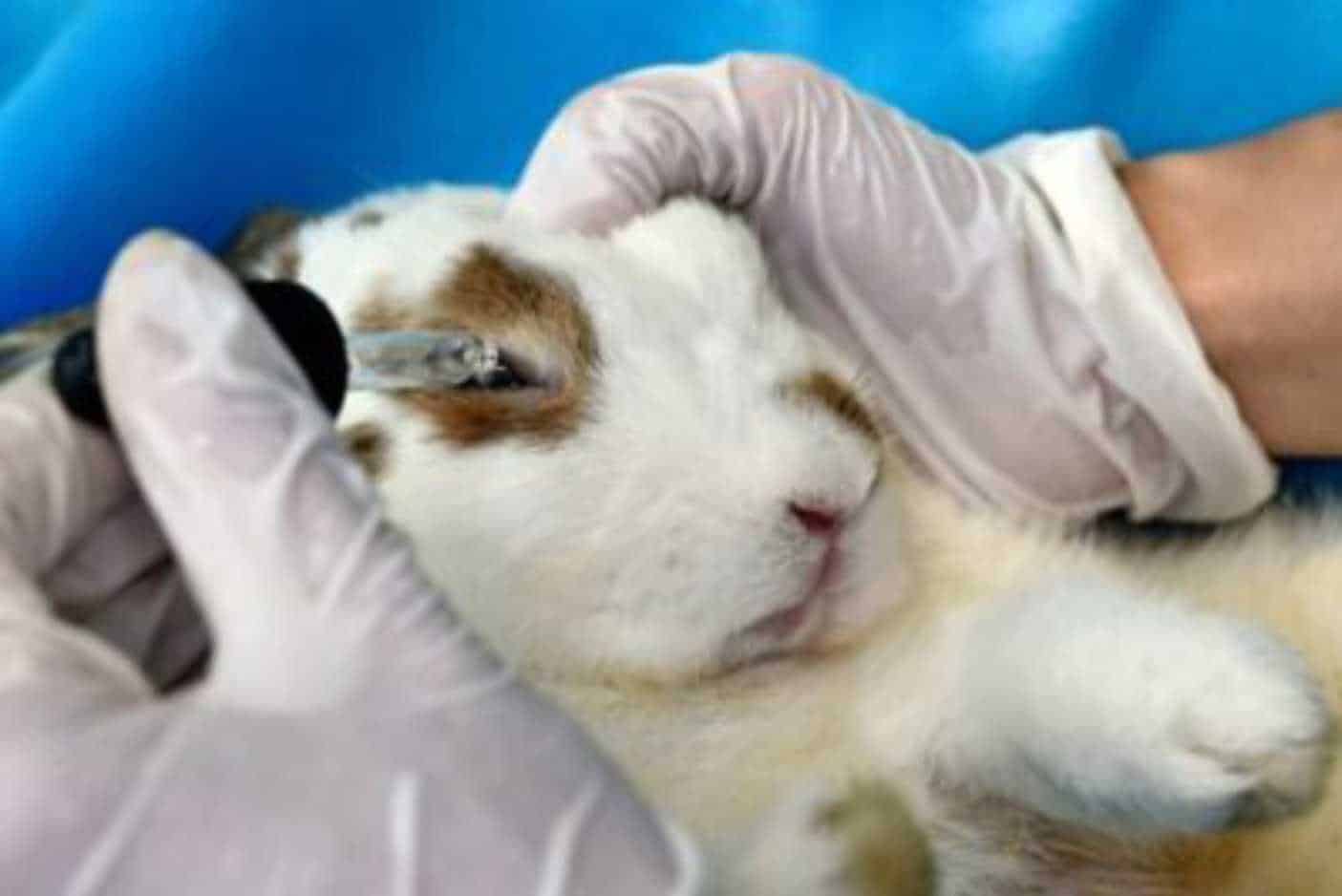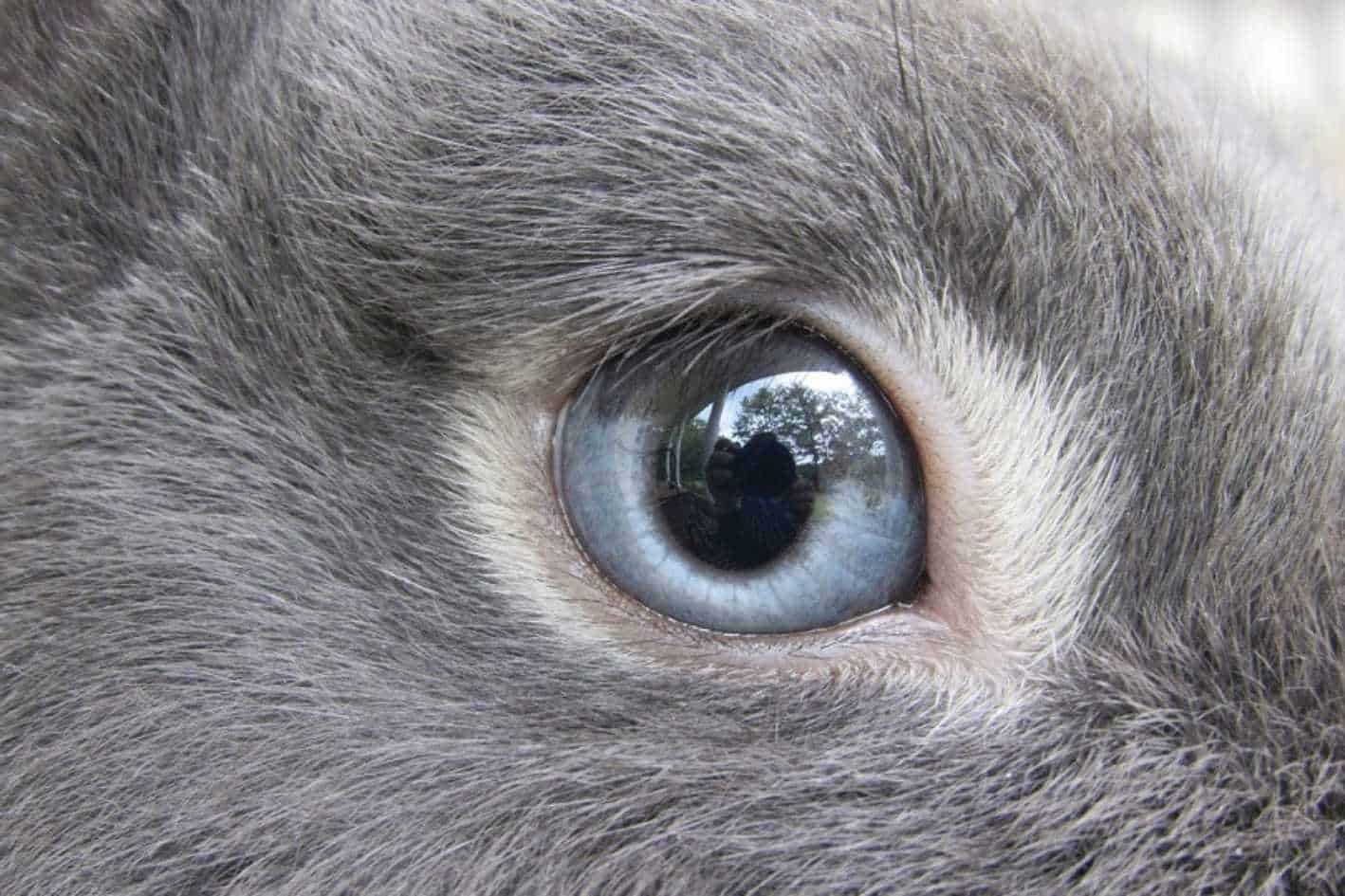Rabbits are charming pets that need specific care to live a healthy and happy life. However, they are prone to eye problems which can be fatal.
One of these is conjunctivitis. Keep reading and learn more about this common rabbit eye infection, including its symptoms, causes, treatment, recovery, cost, and prevention.
What is rabbit conjunctivitis?
Conjunctivitis is also called “weepy eye” or “pink eye” The conjunctiva or the pink flesh surrounding your bunny’s eye turns pink. One or two eyes can get impacted.
This infection affects around 30% of pet rabbits. It’s a prevalent ocular condition. You should provide immediate attention since it could indicate an underlying ailment.
Conjunctivitis is a miserable condition for your rabbit and you. However, it reacts favorably to immediate treatment of the underlying cause.
Symptoms of Rabbit Conjunctivitis
The symptoms of your rabbit’s conjunctivitis will vary based on the cause. Symptoms include the following:
- Eye rubbing
- Watery and runny eyes
- Matted fur around the eyes
- Dampness around the eyes
- Inflamed eyelids
- Accumulated fluids and pus around the eyes
- Photophobia or sensitivity to light
- Redness of the eyes
- Sluggishness
- Loss of appetite
- Lacrimation turns into a thick discharge
- Inability to open eyes
- Involuntary tightening of the rabbit’s eyelids
- Reluctance to move
- Slumped posture
How serious is rabbit conjunctivitis?
Conjunctivitis is also often highly contagious. It can swiftly spread to other rabbits, especially in groups. It can infect a brood of young bunnies so quickly.
This ailment can start as a simple irritation. However, it can quickly escalate into a dangerous illness. It can result in irreversible damage to the eyes, such as blindness. It can also spread to the rabbit’s brain and the rest of its body.
Your rabbits may not want to eat or drink when they are unhappy. This is a big issue because they can perish after 24 hours of no nourishment.
Rabbits’ digestive systems slow down quickly when they cease eating. This causes obstructions in the intestines and can lead to an agonizing death for the rabbits.
Use a syringe to force-feed your bunnies until they can eat voluntarily again. You may use a commercial paste if recommended by your vet. You may also prepare a paste with water and mashed pellets.
You can also try giving treats such as carrots in moderation. However, you can liberally offer them to your unwell bunnies. Carrots will get their digestive systems working.
Causes of Rabbit Conjunctivitis
Various factors can cause conjunctivitis in rabbits. These include allergies, infections, teeth problems, and genetics.
Allergies
Some rabbits may be allergic to particular types of hay. This reaction triggers inflammation and can lead to infection. This can result in conjunctivitis and even worse if not treated promptly.
Infections
Bacteria can cause conjunctivitis. The bacteria can spread by direct contact with an infected rabbit. It can also transfer through contact with contaminated objects, like bedding or toys.
Bacteria can grow on your rabbit’s eye or skin’s surface. These germs can thrive and cause illness if there’s damage or trauma. This happens often when the eyes are dry. It could also be the effect of your bunny being sick. Thus, its immune system becomes weakened.
Viruses can also cause conjunctivitis in bunnies. Myxoma virus (MV) is the most dangerous. This virus can cause conjunctivitis and also swelling of the head and genitals. Nevertheless, you can have your rabbits vaccinated.
The rabbit parasite Encephalitozoon cuniculi can also cause conjunctivitis. Bunnies can carry the virus without becoming unwell. However, others develop an inflammatory disease that affects their eyes, brain, and kidneys.
Dental Issues
A bunny’s teeth do not stop growing. Dental overgrowth in rabbits can induce weepy eyes and obstruct the tear ducts. A vet can diagnose this concern through a dental x-ray.
Excess tears collect in the eyes if this duct becomes clogged. Tears stream down the face, creating redness and swelling of the eyelid skin. The inflammation causes the conjunctiva to swell too. Swollen tooth roots also cause abscesses around and in the eye tissues.
Foreign Object
Bunnies need to consume lots of hay and grass to avoid dental problems. However, seeds might get stuck on their eye or under their eyelids. The foreign matter or the rabbit rubbing the eye might cause pain and harm.
Genetics
Some rabbits have obstructed tear ducts or deformed eyelids from birth. For instance, entropion is a frequent deformity. It is common in New Zealand and Rex rabbit breeds.
The eyelids are folded inwards in this disease. So, the eyelashes irritate the eyes constantly, producing swelling and infection.
Idiopathy
Sometimes a rabbit’s conjunctivitis could have no visible reason. About 36% of rabbit conjunctivitis have no immediate explanation. The cause is said to be unknown.
Treatment of Rabbit Conjunctivitis
If your rabbit begins to exhibit even one of the symptoms listed above, take it to the vet. Mention any changes you’ve seen. Also, disclose if your rabbit appears to have contact with other sick rabbits or animals.
The reason for your rabbit’s symptoms will determine the course of treatment. Your vet will discuss the various treatment options for the many underlying causes.
Your vet may run tests to see whether your rabbit has any infections. Testing is done by drawing blood or obtaining samples of his ocular discharge. These tests can help eliminate any other potential reasons for your rabbit’s problems.
The vet may apply an anesthetic eyedropper to numb your rabbit’s eye before gently checking it. He will examine the eyes for foreign objects or look for scrapes on the surface. He will then flush out any foreign material.
The eye discharge may be taken or sent to a laboratory. This will help identify the cause of conjunctivitis and treat it accordingly.
The vet may also conduct a dental examination. This will determine whether dental abscesses or overlong roots are the cause. He may also require an x-ray to ensure that dental roots aren’t obstructing the tear ducts or infecting areas under or around the eyes.
Your vet may require surgical removal of an infected tooth or roots or any abscesses. He will explain why this is necessary. You should also provide an appropriate diet to your rabbit at all times. This will help grind down their ever-growing teeth.
Also, examine your bunny’s mouth regularly. Visit a veterinarian if you discover that your pet is having difficulties eating.
If the cause is unknown, your vet may recommend moving your bunny’s hay to a different location. This will help lessen the risk of hay dust irritating its eyes. He might also prescribe antibiotics to treat conjunctivitis.
Your vet will prescribe an antibiotic to treat if there is an infection or symptoms. These can be ciprofloxacin, chloramphenicol, and gentamicin. You might also use saline solutions to clean your bunny’s eyes.
If the discharge has sealed the eye, carefully clean it with cooled boiling water and soft tissue, gauze, or cotton wool. However, rabbits are easily stressed, so proceed with caution.
Have a family member or friend hold your bunny. Applying treatment to a wiggling rabbit alone can be challenging.
Infections are likely to return. Lessen the risk by properly cleaning your rabbit’s cage to remove bacteria. Change the bedding and sanitize the cage thoroughly. Discard and replace items that are difficult to clean, like wood chews.
Recovery from Rabbit Conjunctivitis
Your vet may not require follow-up appointments unless your rabbit undergoes surgery. Just keep observing your bunny’s symptoms and condition. This will help assess whether to continue or change ongoing treatment.
You may need to make some changes to your pet’s environment if the symptoms aren’t caused by anything else. You may have to do a feeding adjustment if any tooth is extracted or dental surgery is done.
Your pet should make a full recovery if you can address the underlying issues. Soon your bunny will be as active as it used to be!
Cost of Rabbit Conjunctivitis
Infections of the rabbit’s eyes often signal an underlying condition, such as dental disease. This can be costly to treat and needs continuous care.
Consider getting your rabbit insured as soon as possible. This will help you have all the resources you require to care for them if they turn ill.
Also, be honest with your veterinarian about your budget and treatment costs. Don’t hesitate to share what you believe is best for your pet. Your vet may recommend another treatment if one option doesn’t fit you and your bunny.
Prevention of Rabbit Conjunctivitis
Because bunnies may disguise their discomfort successfully. So, be aware of your pet’s behavior. If it seems to be less activating, hiding, or eating less, you may have a problem. Keep an eye on it.
Make sure its eyelids aren’t moist or partially closed. Also, check that the white of its eyes isn’t pink. When a rabbit is annoyed, it will rub its eyes. Make sure the insides of its front legs aren’t dirty or moist.
Conjunctivitis is highly contagious to other rabbits. Therefore, isolate any rabbit displaying indications of illness. Before adding additional rabbits to your group, observe them for a few days.
Summary
Rabbits are good at hiding their illnesses, so monitor your pets. They can contract various ailments like conjunctivitis.
Be familiar with this common rabbit eye infection, including its symptoms, causes, treatment, recovery, cost, and prevention. Act fast to unusual behavior, so you can treat your rabbit effectively.





